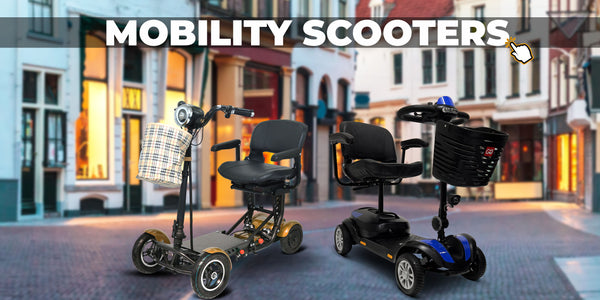Can I use my mobility scooter in all weather conditions?
1. Understanding Mobility Scooters:
2. Use of Mobility Scooters in Various Weather Conditions:
Using a mobility scooter in different weather conditions requires careful consideration:
a. Fair Weather Conditions:
In favorable weather, such as clear skies and moderate temperatures, using a mobility scooter is generally straightforward. Users can navigate comfortably and safely.
b. Rainy Conditions:
Rain poses challenges for mobility scooter users. While some scooters may be water-resistant, excessive exposure to rain can affect the scooter's electronics and performance. Users may need to adapt by using scooter covers or seeking shelter during heavy rain.
c. Snow and Ice:
Snow and ice present significant challenges for mobility scooters due to reduced traction and the risk of slipping. These conditions may render scooters less safe and functional. Avoiding use during such weather or considering alternative transportation methods is advisable.
d. Extreme Heat or Cold:
Extreme temperatures can impact battery performance and user comfort. High temperatures might affect battery life, while cold weather can reduce battery efficiency and affect the scooter's operation. Users should take precautions in extreme weather conditions.
3. Adaptations for Weather Resilience:
To enhance the scooter's resilience in varying weather conditions, users can consider several adaptations:
- Using weather-resistant covers or accessories to protect the scooter from rain or snow.
- Employing battery blankets or insulated covers in cold weather to maintain battery efficiency.
- Investing in all-terrain tires or those designed for specific weather conditions to improve traction.
4. Safety Considerations:
Regardless of weather conditions, safety remains paramount. Users must take necessary precautions:
- Adapting driving behaviors to suit weather conditions, such as reducing speed in rain or avoiding slippery surfaces.
- Wearing appropriate protective gear, including waterproof clothing, when riding in inclement weather.
5. Consultation and Maintenance:
Regular maintenance and consultation with mobility scooter providers or specialists are crucial. They can offer guidance on weatherproofing or adapting the scooter for various conditions.
In conclusion, while mobility scooters offer mobility and independence, their usability in different weather conditions varies. Users must assess weather conditions, make necessary adaptations, prioritize safety, and consider alternative transportation methods when weather conditions pose risks to scooter operation or user safety. Consulting professionals and adopting proactive measures ensure an optimal experience when using a mobility scooter in diverse weather environments.














